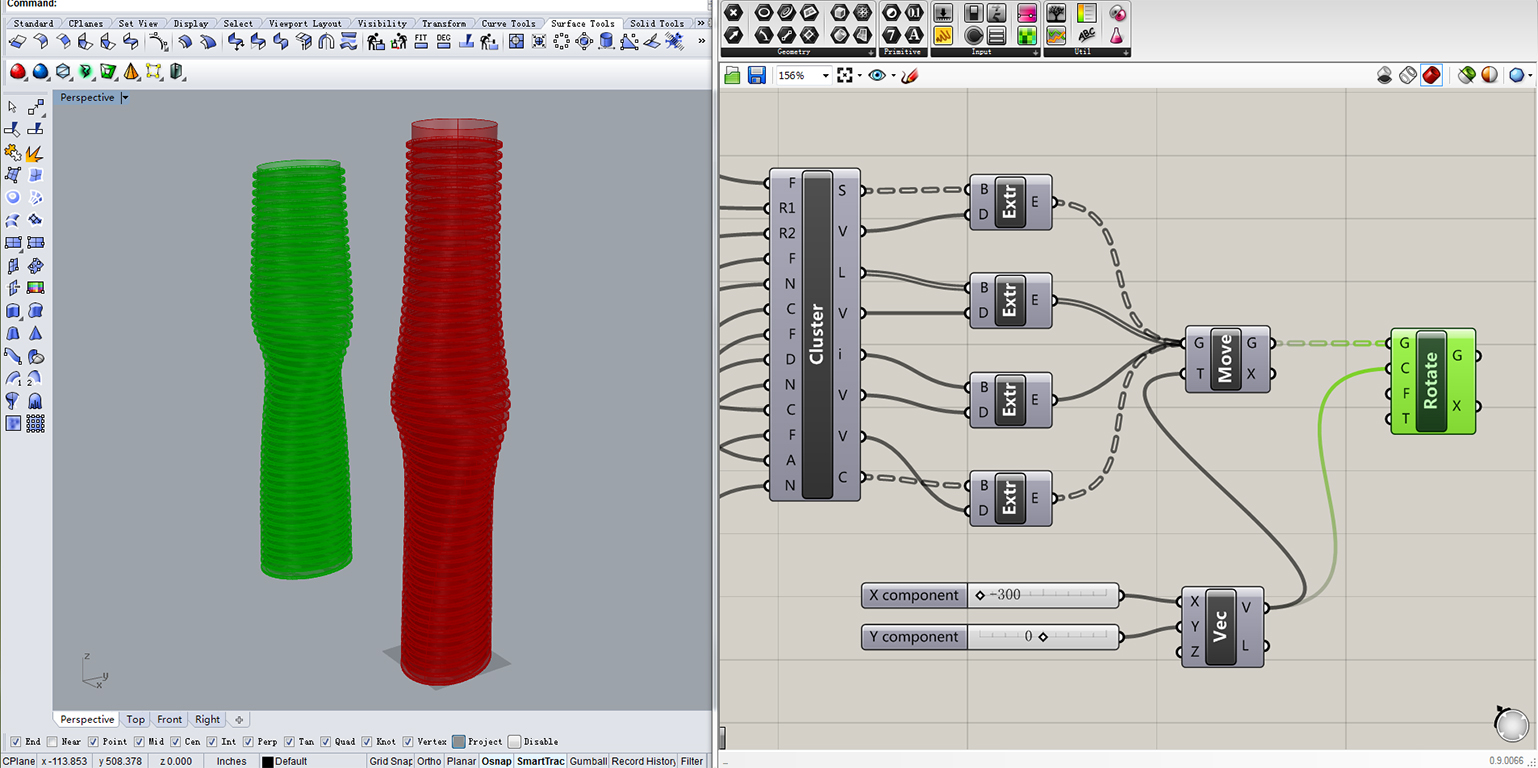Parametric Modeling of Absolute World Tower, Canada
1.
Case Study
The project name is
Absolute World Towers, which is a residential condominium twin tower skyscraper
complex in the five tower Absolute City Center development in Mississauga,
Ontario, Canada. The two towers that I chose to rebuild is Absolute World
4&5, which has a different angle in every floor.
2.
Design Intent
The purpose of this
design is to control all the variables of the building, such as the height of
floors, the number of floors, the rotate angle of floors, and the width and
height of the balcony. By controlling these variables, we can have a better
solution of how to orientate buildings, and how many floors are appropriate.
3.
Build the Parametric Form
3.1 Create an ellipse in grasshopper and
give it two radiuses. Move the ellipse along the Z-axis with give distance, which
can be controlled by the number slider.
3.2 Rotate each floor by applying the
Bezier Curve. Extrude the curves to get the result. The angle of each floor and
the position of the twist part can be controlled by the number slider and the
graphic function.
3.3 By using subtraction to create a roof
which has a different floor height with other floors’. Extrude the curves to
get the result.
3.4 Offset the boundary of the floors in
order to get the edge of the balcony. By dividing the curve into several
segments and interpolating the break points, I can have several individual
glass fences. Extrude the curves to get the result. Number sliders can control
the offset distance, the fences height, and the number of divided segments.
3.5 Cluster all of the operations except
for the controllable variables and the results. Do final modifications to the
building - rotate it into an appropriate angle.
3.6 Apply this model to another building
(Tower 5). Move and rotate it into an appropriate position.
4.
Create the Parametric, Physically-Based
Model
Baked the Grasshopper model into the Rhinos.
Find the edges on mesh by Weaverbird and add a spring to it. Use Kangaroo
component to simulate the surface.
5.
Analyses
Analyze the model
with curvature analysis. The red and blue parts are the most twist part, which
might hard to construct.
6.
Perspectives
By adding texture and editing the reflection rate in Rhinos, I got the rendering of the model.
7.
Project Video













No comments:
Post a Comment